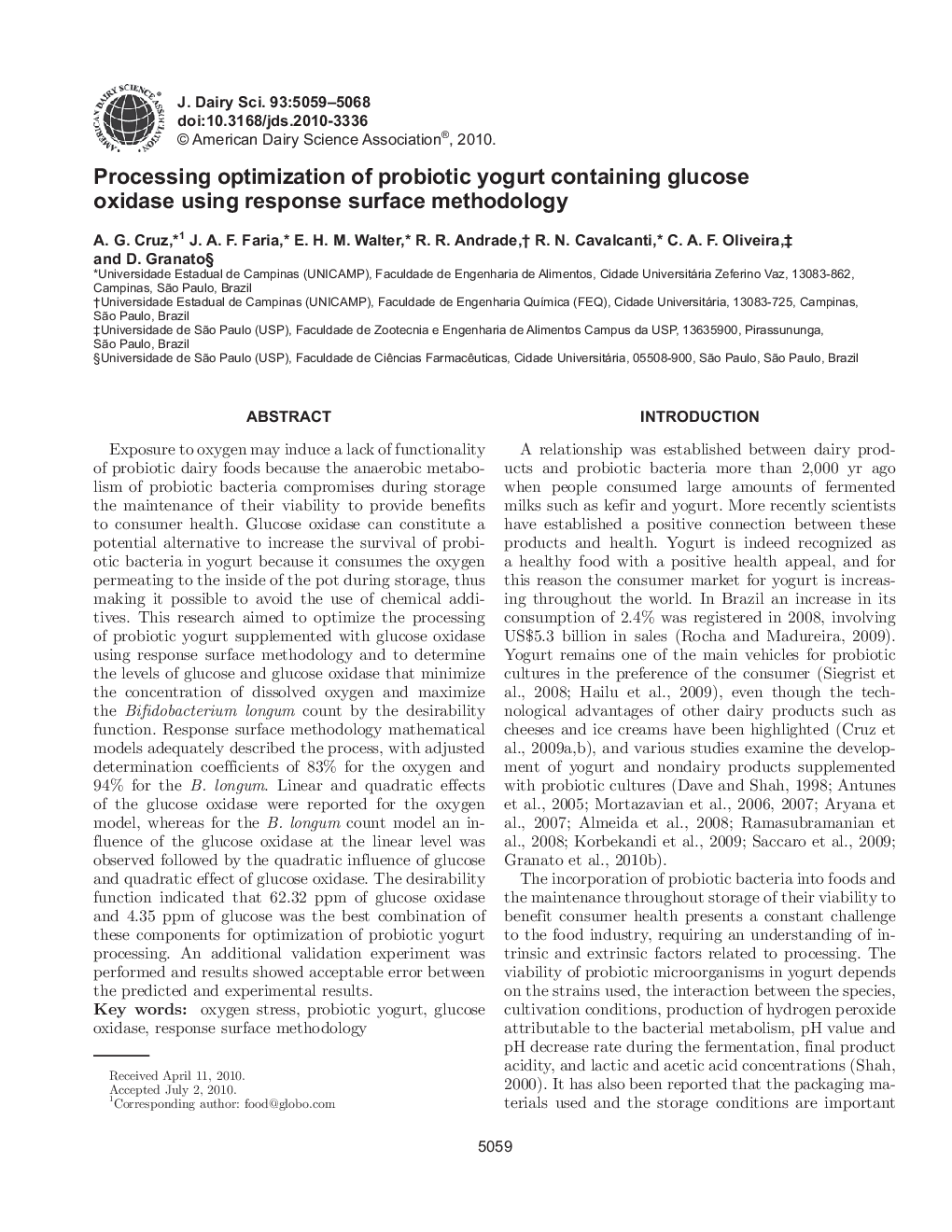| Article ID | Journal | Published Year | Pages | File Type |
|---|---|---|---|---|
| 2438984 | Journal of Dairy Science | 2010 | 10 Pages |
Abstract
Exposure to oxygen may induce a lack of functionality of probiotic dairy foods because the anaerobic metabolism of probiotic bacteria compromises during storage the maintenance of their viability to provide benefits to consumer health. Glucose oxidase can constitute a potential alternative to increase the survival of probiotic bacteria in yogurt because it consumes the oxygen permeating to the inside of the pot during storage, thus making it possible to avoid the use of chemical additives. This research aimed to optimize the processing of probiotic yogurt supplemented with glucose oxidase using response surface methodology and to determine the levels of glucose and glucose oxidase that minimize the concentration of dissolved oxygen and maximize the Bifidobacterium longum count by the desirability function. Response surface methodology mathematical models adequately described the process, with adjusted determination coefficients of 83% for the oxygen and 94% for the B. longum. Linear and quadratic effects of the glucose oxidase were reported for the oxygen model, whereas for the B. longum count model an influence of the glucose oxidase at the linear level was observed followed by the quadratic influence of glucose and quadratic effect of glucose oxidase. The desirability function indicated that 62.32Â ppm of glucose oxidase and 4.35Â ppm of glucose was the best combination of these components for optimization of probiotic yogurt processing. An additional validation experiment was performed and results showed acceptable error between the predicted and experimental results.
Related Topics
Life Sciences
Agricultural and Biological Sciences
Animal Science and Zoology
Authors
A.G. Cruz, J.A.F. Faria, E.H.M. Walter, R.R. Andrade, R.N. Cavalcanti, C.A.F. Oliveira, D. Granato,
